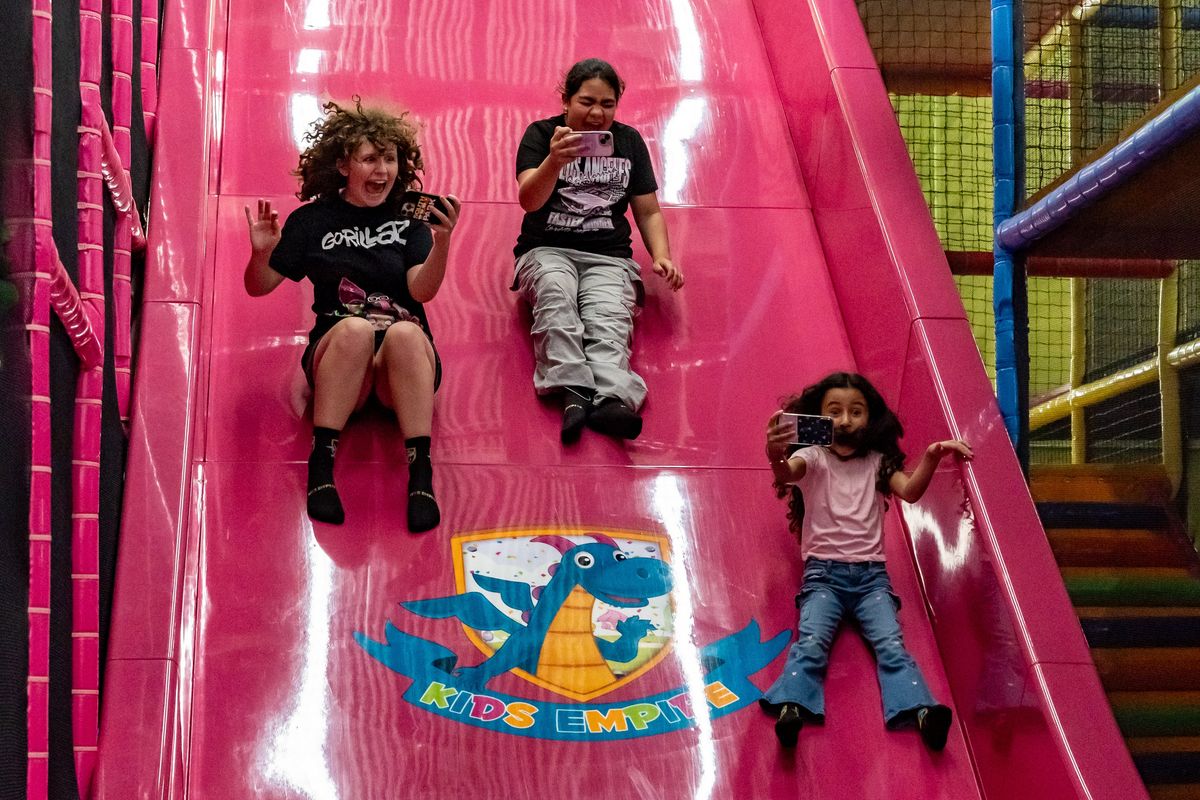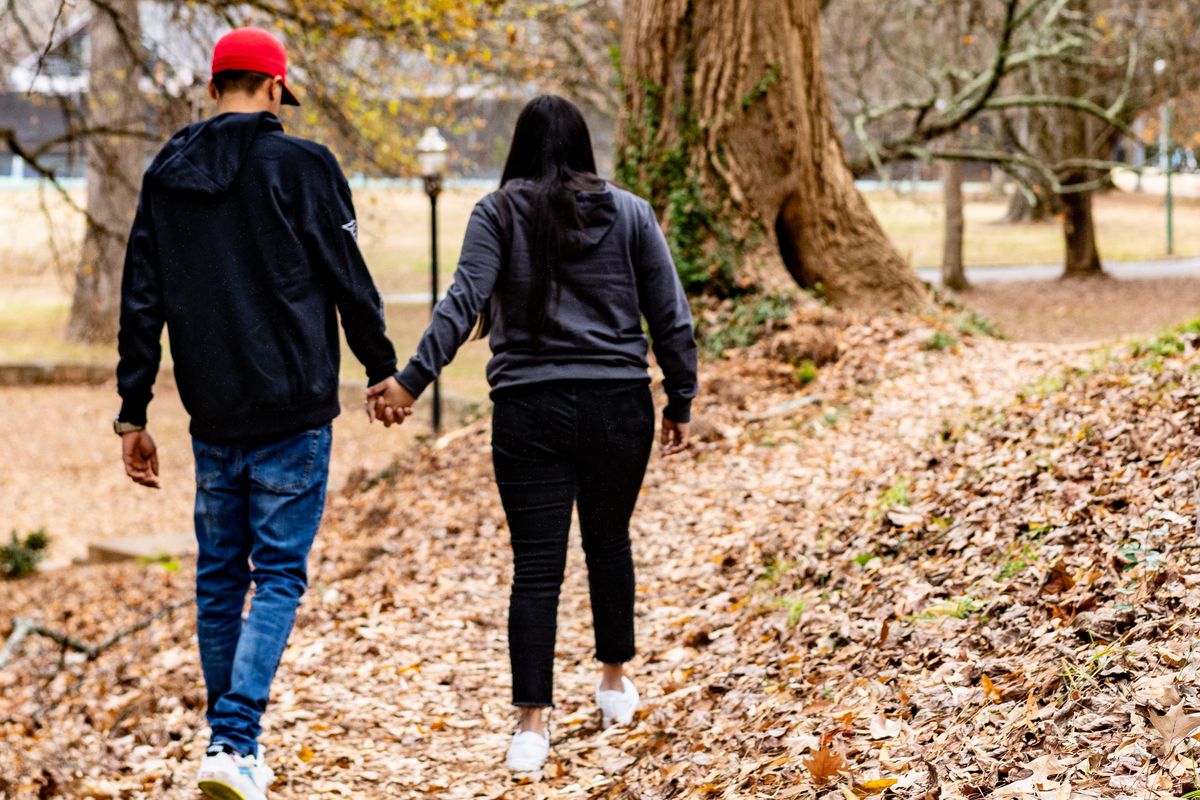A path to safety, for now: How humanitarian parole programs help migrant families in crisis
Through her work as a humanitarian parole sponsor, Sandra McAnany has helped uplift more than a dozen Latin American migrants and changed lives in the process.

Sandra visiting E’s family in Georgia (2023)
Sandra McAnany isn’t one to sit on the sidelines. A 58-year-old grandmother from Wisconsin, McAnany spends her days teaching soft skills classes to adults and spending time with her family. Outside the classroom, however, she’s taken on a role that’s helping people in a big way: serving as a humanitarian parole sponsor and personally taking on the financial responsibility of supporting families fleeing from persecution, violence, and instability.
Since 2023, McAnany has welcomed 17 migrants—11 adults and six children through the CHNV humanitarian parole program, which allows individuals and families from Cuba, Haiti, Nicaragua and Venezuela to live and work temporarily in the United States with the support of an approved sponsor.
“Everyone has their own views and perspectives, but every person I sponsored is thriving and doing well here,” McAnany said.
McAnany didn’t know any of the parolees before sponsoring them, but she had a commitment to helping families from Venezuela specifically, hoping to reunite them with their families who were already living in the United States. After “praying a lot along the way” and communicating with the applicants through WhatsApp, she decided to apply as a sponsor and help them settle into the United States.
“I have a bedroom and a bathroom in my basement,” McAnany says. “My door is open and will always be open for any of the people I sponsored, if they ever have a need for housing.”

At the time, McAnany decided to volunteer as a sponsor to make friends and help other people through hardship. Now, her mission has grown: Seeing how humanitarian parole programs have changed her parole beneficiaries’ lives—as well as her own—for the better.
Humanitarian parole: A long history
Humanitarian parole programs are nothing new. Since 1952, both Democratic and Republican administrations have used humanitarian parole to provide a safer, lawful pathway for noncitizens to enter and live temporarily in the United States. In recent years, through different programs, people from Afghanistan, Ukraine, Cuba, Haiti, and other countries have been able to come to the U.S. to escape urgent crises in their own countries, such as political instability or war.
Coming to the United States through humanitarian parole is no easy feat. The process has its own strict criteria and involves extensive applications and vetting for both beneficiaries and their sponsors. Parolees don’t need to qualify for any other immigration benefit like asylum, but they need to meet the standard for humanitarian parole and successfully pass vetting requirements.
According to Refugees International, 532,000 people have been granted parole through the CHNV program.
A life-changing experience
From the moment she met her first parole beneficiaries at the airport—two families —McAnany already knew it would be a life-changing experience. “It immediately felt like family, like we were lifelong friends,” she said. But she could also sense that it was a culture shock for the parolees. On the way home from the airport, McAnany pulled into a nearby McDonald's and encouraged them to order dinner. Hearing the word “Big Mac,” the families smiled in recognition.
Despite the culture shock, McAnany’s parole beneficiaries had to adapt quickly to life in the United States. Once they were settled, McAnany worked “nonstop” to help the families acclimate to their new lives, answering questions about school and vaccinations while also helping them create resumes, search for jobs, and find English classes online.
It was through this process that McAnany realized just how resilient people could be, and was amazed “not only how hard it was for individuals to leave their loved ones behind, but the amount of work they did to come to the country and remain here.” McAnany also realized how fortunate she was to have her own family living nearby. “I can’t imagine any one of us leaving a country and being apart for an unknown length of time,” she said.
Eventually, and as circumstances changed—one of the parolees found a new job in another city, for example, and was able to move out. But no matter the length of time they spent with each other, McAnany says that with every parolee they formed a bond built for life. One woman, who she refers to as ‘E,’ has even become “like an adopted daughter.” McAnany has traveled to Georgia, where E now lives, three times to visit her.
Uncertain ground: What’s next for humanitarian parole programs
Despite being a critical part of immigration policy in the United States for the last 73 years, humanitarian parole programs are under threat. Immigrant justice nonprofits Justice Action Center and Human Rights First are currently suing the federal government to protect humanitarian parole programs and allow parole beneficiaries to remain in the country for the duration of their parole. McAnany is a plaintiff in the lawsuit.

Participating in the lawsuit has only further bolstered McAnany’s belief in and support for humanitarian parole programs. She hopes the lawsuit will be successful, she says, so that parole beneficiaries and their families can finally have some stability.
“We don’t know what the future is,” she says, “but I want to be optimistic and hopeful that every person I sponsored will be able to stay here safely in the U.S. and continue to thrive.”
This article is part of Upworthy’s “The Threads Between U.S.” series that highlights what we have in common thanks to the generous support from the Levi Strauss Foundation, whose grantmaking is committed to creating a culture of belonging.

